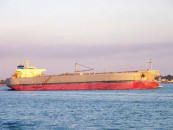Stabilisation without growth?
If GDP growth declines further, both poverty and unemployment, particularly of the youth, will increase further.

The writer is Distinguished Professor of Economics at Forman Christian College University and Beaconhouse National University
The malaise of inflation may not respond to the IMF medicine of high interest rates, reduced public expenditure and exchange rate depreciation as past experience shows. This is because inflation in Pakistan is triggered by cost-push factors such as the prices of fuel, electricity and food to a far greater extent than demand-pull factors. At the same time, exchange rate depreciation is unlikely to improve the balance of payments for three reasons: 1) The lower dollar price of Pakistani exportables, resulting from the exchange rate depreciation, would be neutralised by domestic inflation. 2) Even if the dollar price of exportables could be maintained at a lower level, exporters are unlikely to be able to cater to increased orders for their goods in time due to the physical constraints to increasing export volumes in the short run. These include severe shortages of electricity and gas, bottlenecks at Karachi port and transportation constraints. 3) Given Pakistan’s export structure, which is heavily weighted towards low value added semi-finished goods (yarn, leather, rice), export demand is price inelastic, that is, the growth in demand is proportionately less than the dollar price reduction. Consequently, the total foreign exchange earnings can be expected to fall following exchange rate depreciation. On the other side of the coin, since Pakistan’s imports are largely necessities such as fuel, fertiliser and cooking oil, their import demand is also inelastic, that is, the reduction in import demand following an increase in rupee prices associated with exchange rate depreciation, would be proportionately less than the increase in rupee prices. Under these circumstances, the combined export earnings and import expenditure effects of exchange rate depreciation in the short run are likely to worsen the balance of payments rather than improving them, ceteris paribus.
So, the balance of payments deficit and the inflation rate are unlikely to fall. Yet, if the government does not take remedial action on the growth front, GDP growth will surely fall as the IMF programme is designed to induce such behaviour. What is the political economy of such an eventuality? The latest estimate of poverty made by Malik, Darosh, Nazli and Whitney is that if the poverty line is taken as Rs2,028 per person per month, the percentage of the population in Pakistan living in poverty is 35.6. At the same time, we must remember that 3.1 million persons, out of whom 2.1 million are youngsters, are entering the labour force annually. If GDP growth declines further, both poverty and unemployment, particularly of the youth, will increase further. This will provide grist for the mill of militant extremism. At the same time, with the IMF pressure to direct scarce government revenues to debt servicing, the amount of revenues left for the provinces will be further squeezed to a point where not only will Balochistan, Sindh and Khyber-Pakhtunkhwa (K-P) have less to spend on development projects, but even their capacity to pay salaries to government officials will come under stress. The federal structure is already fragile with an insurgency in Balochistan, seething tensions in Sindh and terrorists on the rampage in K-P. The political consequences of directing federal government revenues to debt servicing rather than providing succour to the provinces can build up the narrative of grievances in the relatively backward provinces with grave consequences for the federal structure.
Pakistan went to the IMF because it was in dire straits on the foreign exchange front. Given the weakness of the IMF analytical framework, the uncritical adoption of their programme can have serious adverse consequences for Pakistan’s economy, society and political structure. Therefore, it is of crucial importance for policymakers to find the fiscal space and, equally important, new thinking to have a growth strategy.
Published in The Express Tribune, October 25th, 2013.
Like Opinion & Editorial on Facebook, follow @ETOpEd on Twitter to receive all updates on all our daily pieces.



















COMMENTS
Comments are moderated and generally will be posted if they are on-topic and not abusive.
For more information, please see our Comments FAQ